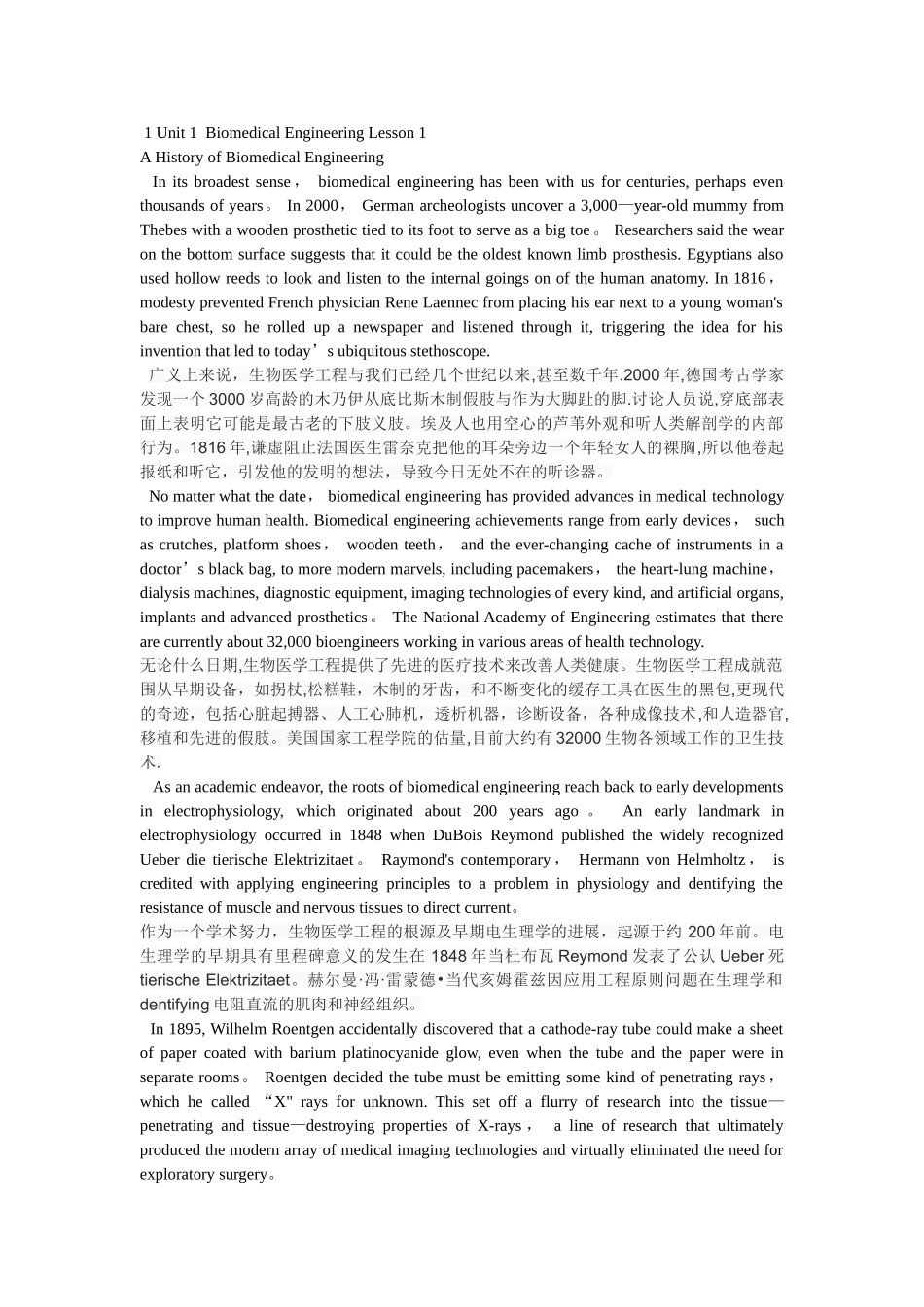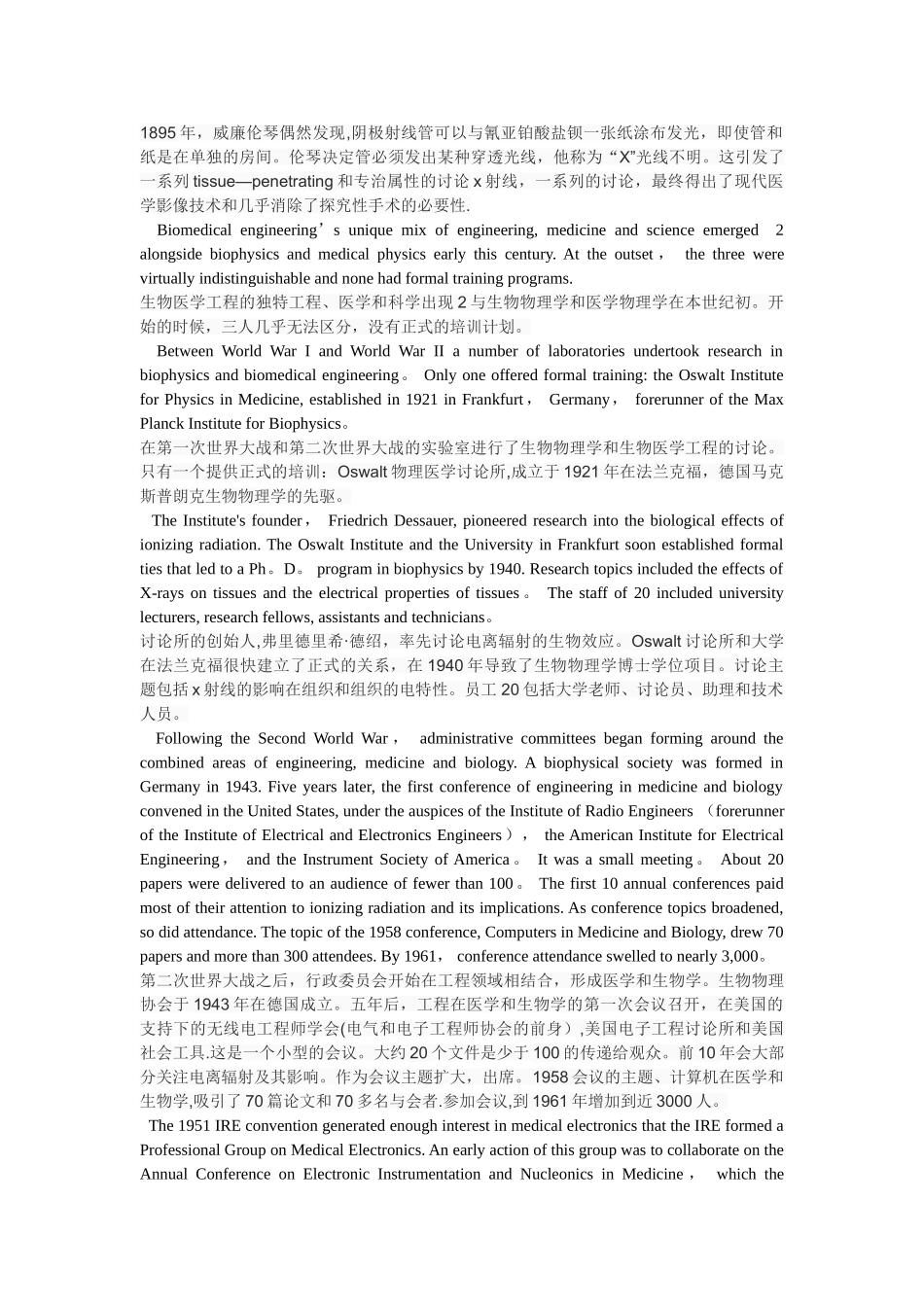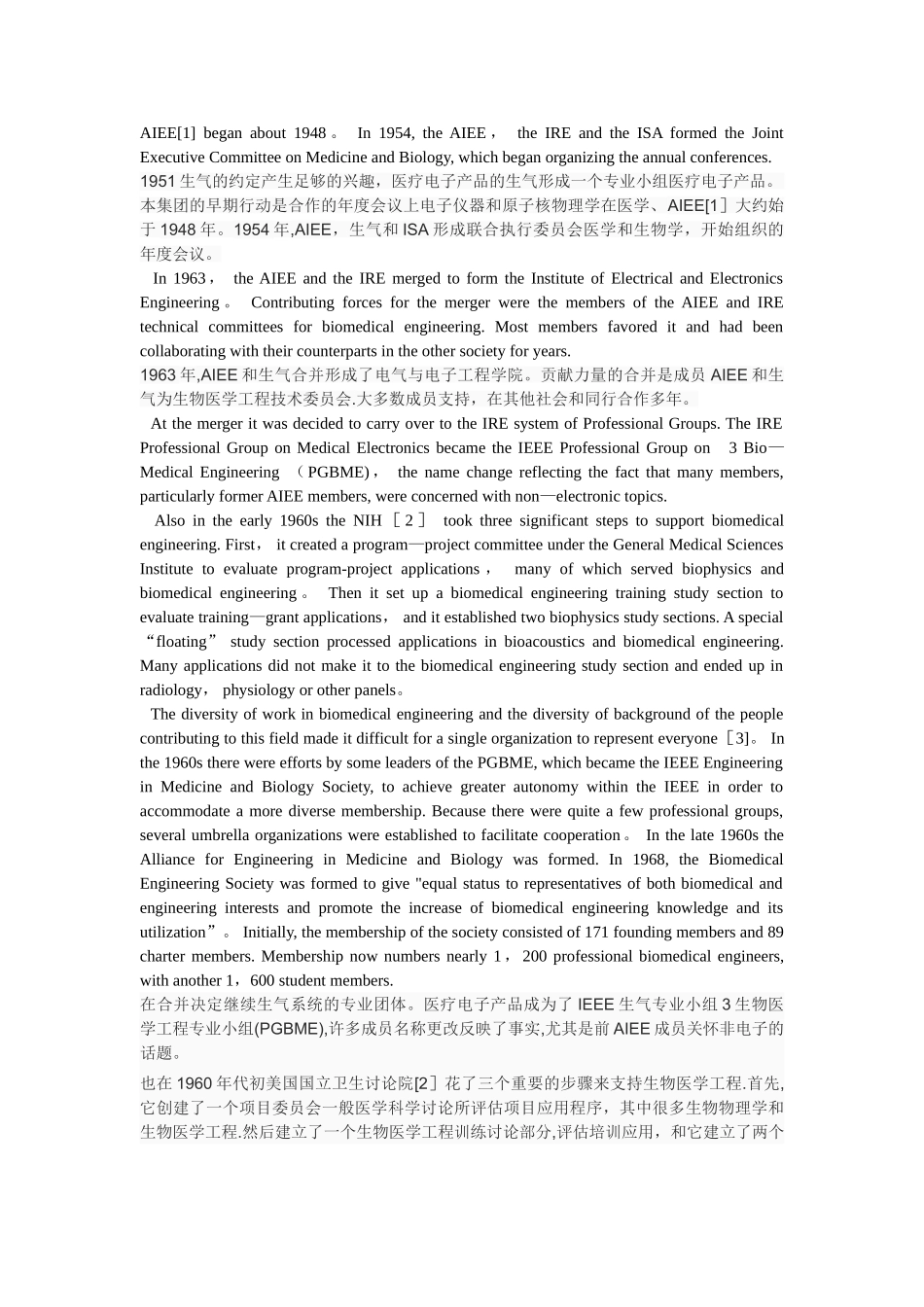1 Unit 1 Biomedical Engineering Lesson 1 A History of Biomedical Engineering In its broadest sense , biomedical engineering has been with us for centuries, perhaps even thousands of years。 In 2000, German archeologists uncover a 3,000—year-old mummy from Thebes with a wooden prosthetic tied to its foot to serve as a big toe。 Researchers said the wear on the bottom surface suggests that it could be the oldest known limb prosthesis. Egyptians also used hollow reeds to look and listen to the internal goings on of the human anatomy. In 1816, modesty prevented French physician Rene Laennec from placing his ear next to a young woman's bare chest, so he rolled up a newspaper and listened through it, triggering the idea for his invention that led to today’s ubiquitous stethoscope. 广义上来说,生物医学工程与我们已经几个世纪以来,甚至数千年.2000 年,德国考古学家发现一个 3000 岁高龄的木乃伊从底比斯木制假肢与作为大脚趾的脚.讨论人员说,穿底部表面上表明它可能是最古老的下肢义肢。埃及人也用空心的芦苇外观和听人类解剖学的内部行为。1816 年,谦虚阻止法国医生雷奈克把他的耳朵旁边一个年轻女人的裸胸,所以他卷起报纸和听它,引发他的发明的想法,导致今日无处不在的听诊器。 No matter what the date, biomedical engineering has provided advances in medical technology to improve human health. Biomedical engineering achievements range from early devices, such as crutches, platform shoes, wooden teeth, and the ever-changing cache of instruments in a doctor’s black bag, to more modern marvels, including pacemakers, the heart-lung machine, dialysis machines, diagnostic equipment, imaging technologies of every kind, and artificial organs, implants and advanced prosthetics。 The National Academy of Engineering estimates that there are currently about 32,000 bioengineers working in...


